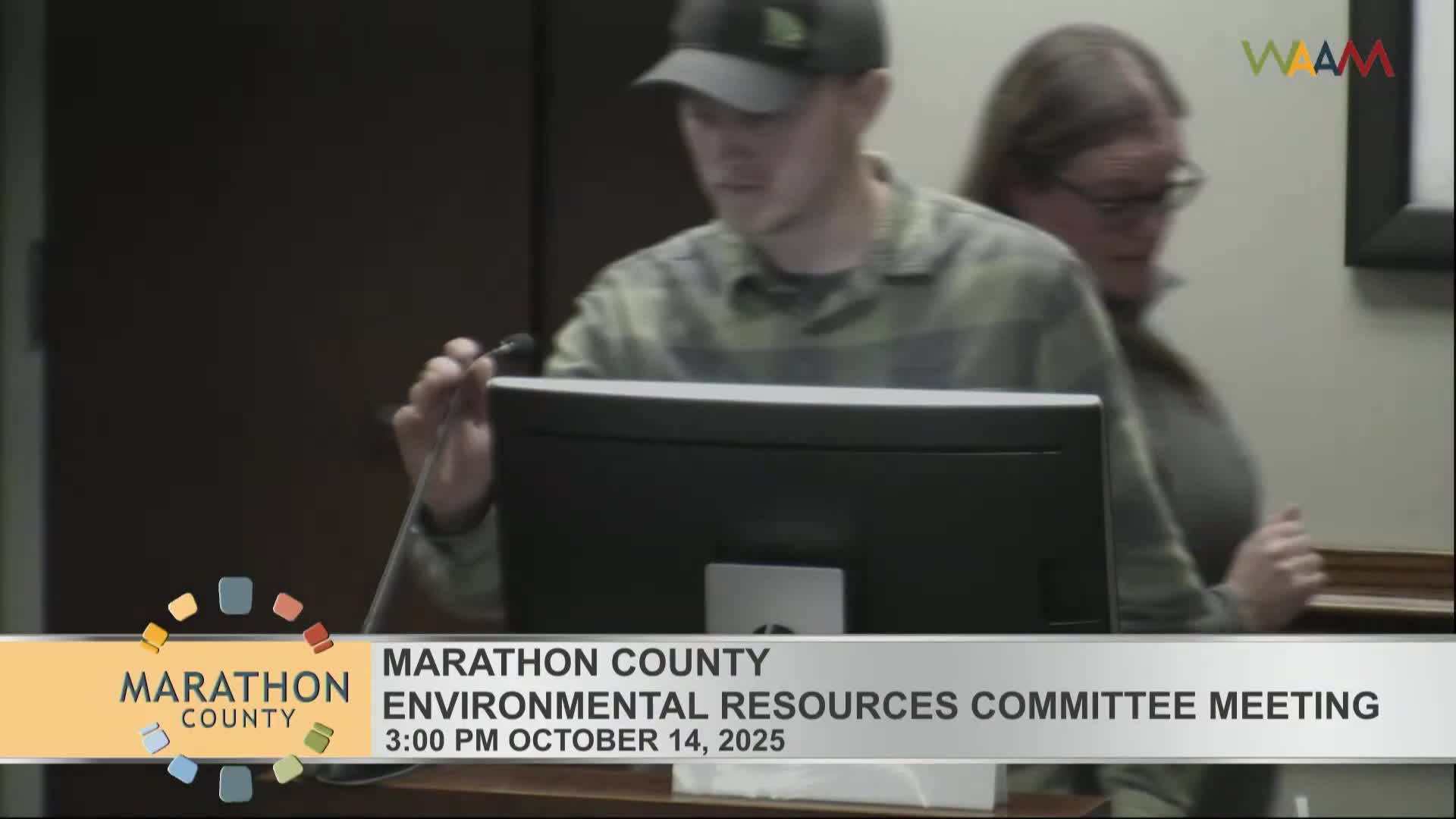County tags walleyes to track movements at Big Eau Pleine; installs shoreline plantings under Healthy Lakes grants
October 15, 2025 | Marathon County, Wisconsin
This article was created by AI summarizing key points discussed. AI makes mistakes, so for full details and context, please refer to the video of the full meeting. Please report any errors so we can fix them. Report an error »

Marathon County conservation staff reported two distinct aquatic updates to the Environmental Resources Committee Oct. 14: an acoustic tagging study tracking walleye movements in Big Eau Pleine Reservoir and small shoreline projects funded under the Wisconsin DNR Healthy Lakes and Rivers grant program.
For the fish study, staff said they surgically implanted acoustic tags in 30 walleyes captured in three reservoir zones this spring and placed 14 acoustic receivers around the reservoir. As of September, seven tagged fish had been harvested and returned to staff; two tagged fish had been released. Staff said recovered tags will be reused and they plan to add another 12 to 18 tagged fish in the coming spring. Early detection data already show some tagged walleyes moving substantial distances within the reservoir and upstream into river reaches, staff reported.
Separately, under the DNR Healthy Lakes and Rivers program (grants up to $1,000 per project), the county served as the applicant and facilitated eight projects on Big Bass Lake in southeastern Marathon County: six native-plant shoreline installations and two rain gardens. Staff said most sites received roughly 150 plants; projects are designed to reduce shoreline erosion, improve habitat and increase infiltration of runoff before it reaches the lake.
Why it matters: The tagging study is intended to show how walleyes use reservoir habitat and whether fish concentrate near aeration or other structures during low-oxygen periods. Healthy Lakes projects are small, homeowner-scale interventions to reduce shoreline erosion and runoff into lakes.
Staff said they will bring additional tagging results and analysis next spring after data retrieval and further battery maintenance on receivers.
For the fish study, staff said they surgically implanted acoustic tags in 30 walleyes captured in three reservoir zones this spring and placed 14 acoustic receivers around the reservoir. As of September, seven tagged fish had been harvested and returned to staff; two tagged fish had been released. Staff said recovered tags will be reused and they plan to add another 12 to 18 tagged fish in the coming spring. Early detection data already show some tagged walleyes moving substantial distances within the reservoir and upstream into river reaches, staff reported.
Separately, under the DNR Healthy Lakes and Rivers program (grants up to $1,000 per project), the county served as the applicant and facilitated eight projects on Big Bass Lake in southeastern Marathon County: six native-plant shoreline installations and two rain gardens. Staff said most sites received roughly 150 plants; projects are designed to reduce shoreline erosion, improve habitat and increase infiltration of runoff before it reaches the lake.
Why it matters: The tagging study is intended to show how walleyes use reservoir habitat and whether fish concentrate near aeration or other structures during low-oxygen periods. Healthy Lakes projects are small, homeowner-scale interventions to reduce shoreline erosion and runoff into lakes.
Staff said they will bring additional tagging results and analysis next spring after data retrieval and further battery maintenance on receivers.
View full meeting
This article is based on a recent meeting—watch the full video and explore the complete transcript for deeper insights into the discussion.
View full meeting
